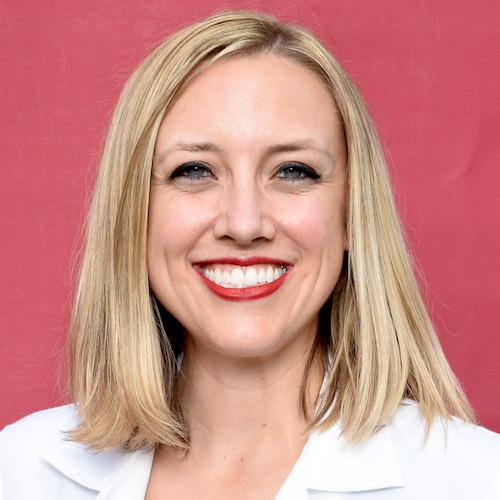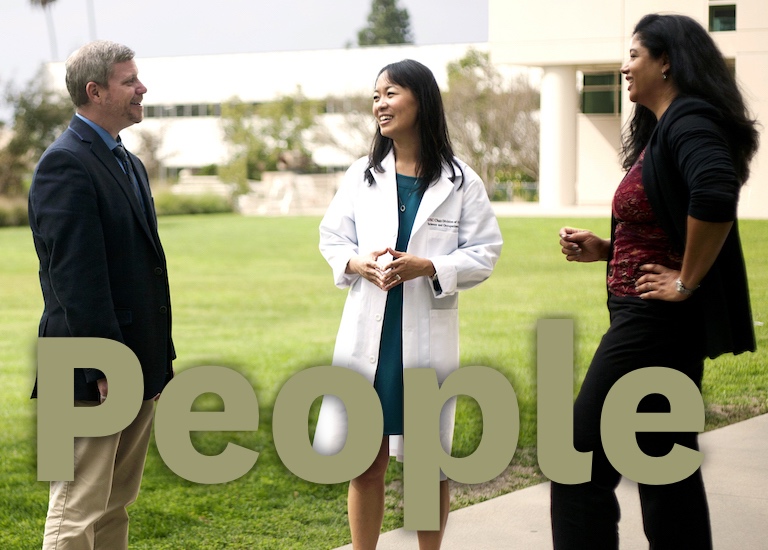Kelsey Peterson OTD, OTR/L
Associate Professor of Clinical Occupational Therapy
Keck Hospital
CHP 133
(323) 442-5370
.(JavaScript must be enabled to view this email address)
Kelsey Peterson received her bachelor’s degree in psychology with an emphasis in clinical/behavioral applications from California Lutheran University. After obtaining her undergraduate degree, she became an English teacher in Japan and a life enrichment director at an assisted living community upon returning to the United States. In 2015 she returned to California to complete her master’s degree and clinical doctorate in occupational therapy at the University of Southern California. As a doctoral resident at Keck Hospital of USC, she focused on the effect of mild neurocognitive dysfunction on patients’ quality of life and improving meaningful participation for those diagnosed with Amyotrophic Lateral Sclerosis (ALS).
Dr. Peterson currently serves as a clinical faculty member at Keck Hospital of USC, where she works primarily with patients experiencing neurological dysfunction across the continuum of care.
Education
Doctorate of Occupational Therapy (OTD)
2018 | University of Southern California
Master of Arts (MA)
in Occupational Therapy
2017 | University of Southern California
Bachelor of Science (BS)
in Psychology (emphasis in Clinical/Behavioral Application)
2011 | California Lutheran University
Selected Publications
Peterson, K. (2023). Cognitive Orientation to Daily Occupational Performance’s (CO-OP’s) effectiveness in the subacute stroke population. In E. A. Pyatak & E. S. Lee (Eds.), 50 studies every occupational therapist should know (pp. 321-326). Oxford, UK: Oxford University Press. https://doi.org/10.1093/med/9780197630402.003.0046 Show abstract
The “Combined Cognitive-Strategy and Task-Specific Training Improve Transfer to Untrained Activities in Subacute Stroke: An Exploratory Randomized Controlled Trial” article analyzed the effect of the Cognitive Orientation to Daily Occupational Performance (CO-OP) approach against regular outpatient occupational therapy (OT) on improving participants’ occupational performance and participation post-stroke. It employed an exploratory, randomized controlled trial at two outpatient OT clinics in Canada and the United States. Outcomes were measured using the Canadian Occupational Performance Measure, the Performance Quality Rating Scale (PQRS), the Community Participation Index, the Stroke Impact Scale, and the Self-Efficacy Gauge. Twenty-six participants were evaluated. At post-intervention, CO-OP over usual care had a medium effect size for PQRS trained activities and a large effect for PQRS untrained activities. At 3-month follow-up, CO-OP over usual care had large effect sizes for PQRS trained and untrained activities and medium effect sizes for change in participation via the Community Participation Index and self-efficacy.
Keywords. occupational therapy, neurorehabilitation, outpatient therapy, CO-OP, stroke, rehabilitation, cognition, self-efficacy
Wilcox, J., Peterson, K. S., Lewis, C. M., & Margetis, J. L. (2021). Occupational therapy during COVID-19–related critical illness: A case report. American Journal of Occupational Therapy, 75( Suppl. 1), 7511210010. https://doi.org/10.5014/ajot.2021.049196 Show abstract
The coronavirus disease 2019 (COVID-19) pandemic has presented unique challenges for occupational therapy practitioners working in acute and critical care settings. Using the best available evidence, this case report overviews a prototypical COVID-19 disease course and discusses key aspects of clinical reasoning for practitioners working with this novel population. Following a single patient admitted to a tertiary academic medical center, the authors review the occupational profile and medical history, common impairments, the intervention plan, and strategies to align the occupational therapy and medical goals of care.






